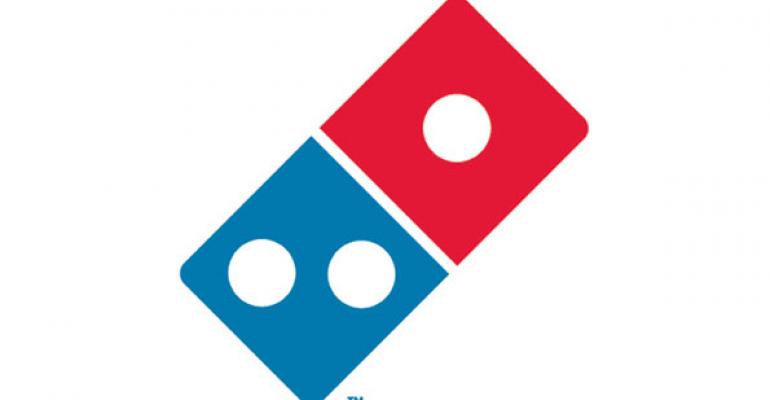Strong, consistent sales growth at Domino’s Pizza Inc. in the years since the recession, including 10.5-percent same-store sales growth in the third quarter, has been a boon to franchisee profits.
Domino’s executives suggested during the company’s earnings call Thursday that operators’ average cash flow would reach $100,000 per location this year, an increase from $89,000 last year.
The profits aren’t just due to improving sales, but to the method in which sales are being generated. Domino’s CEO Patrick Doyle said rising digital orders are generating higher profits, both in the profitability of such orders and in their ability to get customers to return.
“It’s not just labor savings,” Doyle said. “It’s order count growth and the ability to drive frequency and retention of customers. That’s ultimately what drives better overall economics in our stores. Volume, order counts and happy customers have more of an effect than labor savings.”
Still, Domino’s results disappointed investors, and its stock fell 5 percent by mid-afternoon Thursday. Neither sales nor profits met expectations. Net income in the third quarter ended Sept. 6 rose 6.2 percent, to $37.8 million, from $35.6 million the previous year. Total revenue rose 8.5 percent, to $484.7 million, from $446.6 million the previous year.
The biggest culprit in the disappointing quarter was foreign exchange rates. Companies with a large overseas presence — most of Domino’s 12,000 locations are outside the U.S. — have struggled this year because of the strong dollar.
Domino’s said that its global retail sales rose 6.1 percent in the third quarter. But without the impact of foreign exchange rates they would have increased 15.2 percent. Overall retail sales would have been $1 billion higher so far this year if the company had used 2011 exchange rates.
Still, executives lauded Domino’s continued momentum. The company pre-released same-store sales results last week, including a 7.7-percent increase in international markets, the 87th straight quarter of growth. The company has opened a net 742 international locations over the past 12 months.
“Our business and brand continue to thrive as a top performer,” Doyle said. “Our franchisees continually impress me with the way they meet the challenges of sustained success as they keep piling up points on the scoreboard.”
Operator profits are key for the chain because more profitable operators are more likely to remodel and build new units. The company and its franchisees have opened a net 96 new domestic locations over the past 12 months after years of stagnation in the U.S. Domino’s and its franchisees have 5,100 locations in the U.S.
Operators are also on track to meet Domino’s goal of reimaging 2,000 locations by the end of the year.
“They’re excited, they’re reinvesting and they’re driving the business forward,” Doyle said, noting that $100,000 per-unit profits has been a goal for the business “for some time.”
Domino’s has gained sales momentum largely due to a significant investment in its digital presence and marketing. Half of orders to the company come through digital channels, and the Ann Arbor, Mich.-based chain has continually increased the methods customers can use to order its pizzas. It is now marketing those efforts nationwide.
The company is launching its first national loyalty program early this quarter, which will enable customers to gain points as they order more food. “We’ve seen what loyalty programs do for many companies in many industries,” Doyle said. “It was time for us to get in the game.”
Doyle suggested that Domino’s is also getting some benefit from an economy in which the consumer remains cautious in their spending and is focused on value.
As such, he said, the company is limited in its ability to raise menu prices even though it has demonstrated sales strength for years now.
“Consumers have been more careful in how they spend their money after the downturn, and that hasn’t changed,” Doyle said. “That helps us because we create value.
“Is there significant pricing power? No, there’s not. I don’t think you could take aggressive price in this economy and not expect that’s going to hit order counts.”
Doyle said he isn’t worried about an influx of delivery businesses and restaurant chains looking at delivery as a way to generate sales growth. He noted that offering delivery service effectively is challenging.
“There are real operational complexities to it beyond just building the software platform to do it,” Doyle said. “We’re really good at it. As people have tried to compete with us around the world in delivery, they’ve found over time it’s operationally not as easy to operate as people may think.”
Correction: Oct. 9, 2015 An earlier version of this story misstated for how long Domino's has reported same-store sales growth in international markets.
Contact Jonathan Maze at [email protected].
Follow him on Twitter: @jonathanmaze





